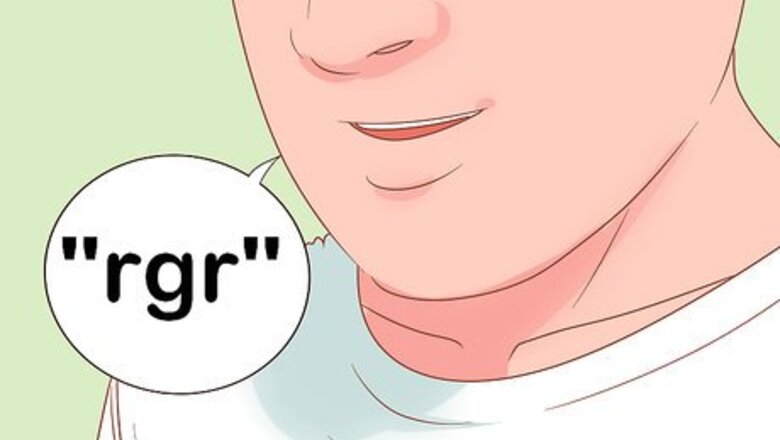
views
Mastering the Consonants
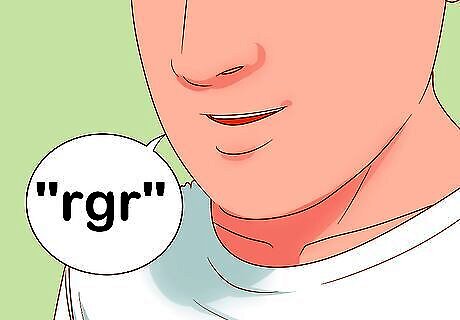
Produce a guttural “r” sound. The “r” sound is produced very differently in the French language. When you say the sound, you need to pull your tongue to the back of your throat far enough to vibrate your uvula. This will sound like you are pronouncing a “gee” sound. Your "r" will turn out to be a rolled/groaned “rgr.” Consider practicing this in front of a mirror with your mouth open until you are comfortable with producing the sound. Another way to think of the French "r" sound is to replace the "r" with an English "h" sound, but try to really rough it up, almost gargling as you make the "h" sound.
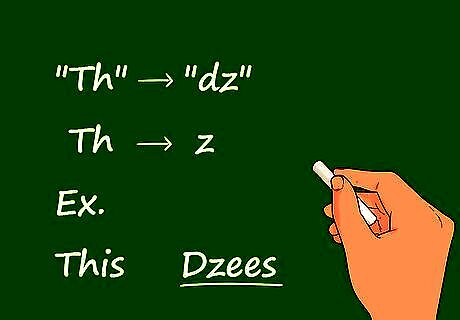
Replace “th” with the “z” sound. The “th” sound does not exist in the French language. When speaking English, French speakers tend to replace this sound with the “z” sound. If you want to be really accurate, shoot for a “dz” sound, like “dzees” for “this.”

Remember that the “h” is always silent. In the French language, the “h” is always silent. This is true whether it is in the beginning, middle, or end of a word, so omit it when you are speaking. For instance, instead of “how” you would say “'ow,” and instead of “hospital” you would say “'ospital.”

Change your production of the “j” and “g” sounds to “zh.” In French the letter “j” is called “zhee, and “g” is called “jhay,” They are both pronounced like a soft “jhay,” like the “s” in “pleasure” and the “g” in “mirage.” For example, try pronouncing the word “joke” like “zhoke” and “judge” like “zhuzh.”
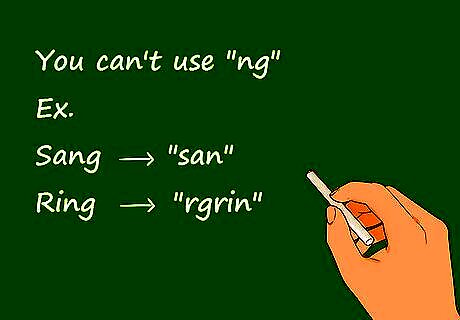
Drop the “g” in words with “ng.” The “ng” sound in words like “cling” is not used in the French language. You can use a “ny” like in the word “nyan.” Or, you can just drop the “g” and use the regular “n” sound. For instance, instead of “sang,” you would say “san.” And instead of “ring,” it would be pronounced “rgrin” with that guttural “r.”
Learning the Vowels
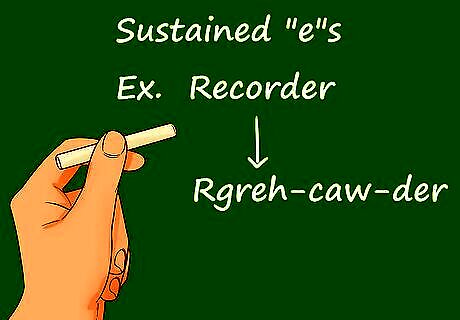
Produce “e” sounds with the tongue lower in the mouth. In the French language, the “e” sound is more open with the tongue low. To produce a convincing French accent, stretch your "e" sound to make it as long as possible. For example, "recorder" can sound completely transformed as "rgreh-caw-der".
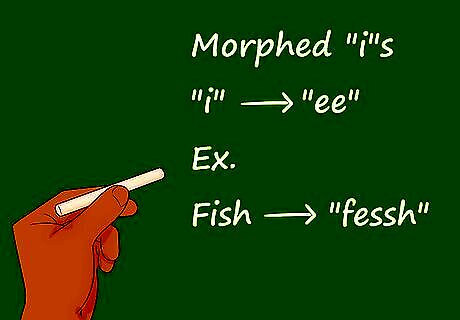
Pronounce “i” like the “ee” in “see.” When you say a short "i" sound, you turn it into something more like an "ee". For example, "fish" will sound more like "feesh," but do not make it any longer than you would "fish.” Typically, the “i” is shorter in length than it is in English. Keep your production of this vowel short and precise. A helpful hint is to remember to smile when you produce “i” in words. This helps you to pull your lips apart to say the long “ee” sound.

Say “u” with your lips puckered tightly. To make your French accent more convincing, say the “u” sound with the lips out and rounded. Your lips should be a lot tighter than a normal English production of “u.” You’ll want to practice by puckering your lips and keeping them rounded while you product the “ee” sound. This is the French “u.” For example, the word “you” with a French accent might sound slightly more like “yee.” But don’t exaggerate that “ee” sound too much, because your lips should still be rounded. When you are pronouncing words with “u,” make sure it is very short. The French “u” is not a long vowel sound.

Reduce tongue movement and focus more on lip placement. In French, vowels are typically pure and short. This means that French speakers do not need to move their tongue around when talking as much as English speakers do. When you’re pronouncing vowels, keep your tongue down near the bottom front teeth. Let your lips, jaw, and nose do most of the work.
Practicing Pitch and Intonation Patterns
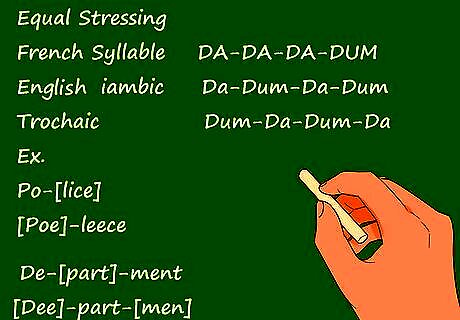
Speak with equal stressing. In French, each syllable in a sentence has about equal stress (DA-DA-DA-DUM), as opposed to English, where stress comes second (Da-DUM-da-DUM). When speaking with a French accent, try your best to produce a smooth flow of syllables until you reach the end of a phrase or sentence. For example, instead of "po-[lice]' de-[part]'-ment", think "[poe]'-leece [dee]'-part-[men].'"

Stress the last syllable when speaking in sentences. French speakers have a very predictable stress pattern. They always put greater emphasis on the last syllable of a sentence or phrase. This is different from English speakers, where the stress may fall on any syllable in a word. For example, with a French accent you will say the word “Atlantic” with stressing at the end (e.g., at-lan-TIC). Native English speakers will stress the middle syllable in “Atlantic” (e.g., at-LAN-tic).
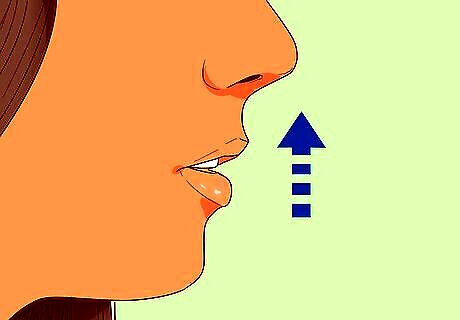
Speak with an upward intonation pattern. When producing a sentence, French speakers usually start out with their voice flat, with their intonation pattern gradually rising. Native English speakers typically use a falling pattern, where their intonation starts high and gradually goes down when they reach the end of a sentence. Do not confuse intonation with stressing of syllables. Intonation refers to the pitch, or rise and fall of the voice.




















Comments
0 comment